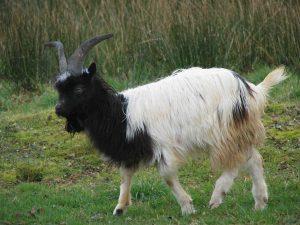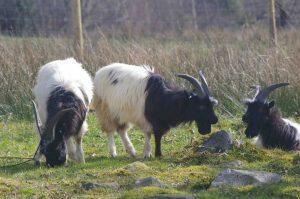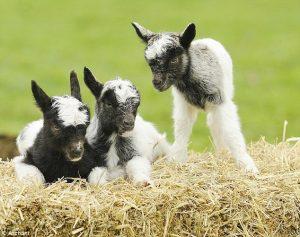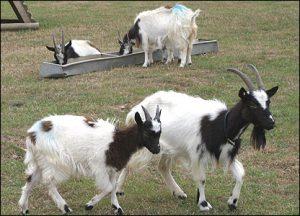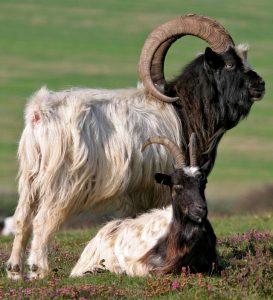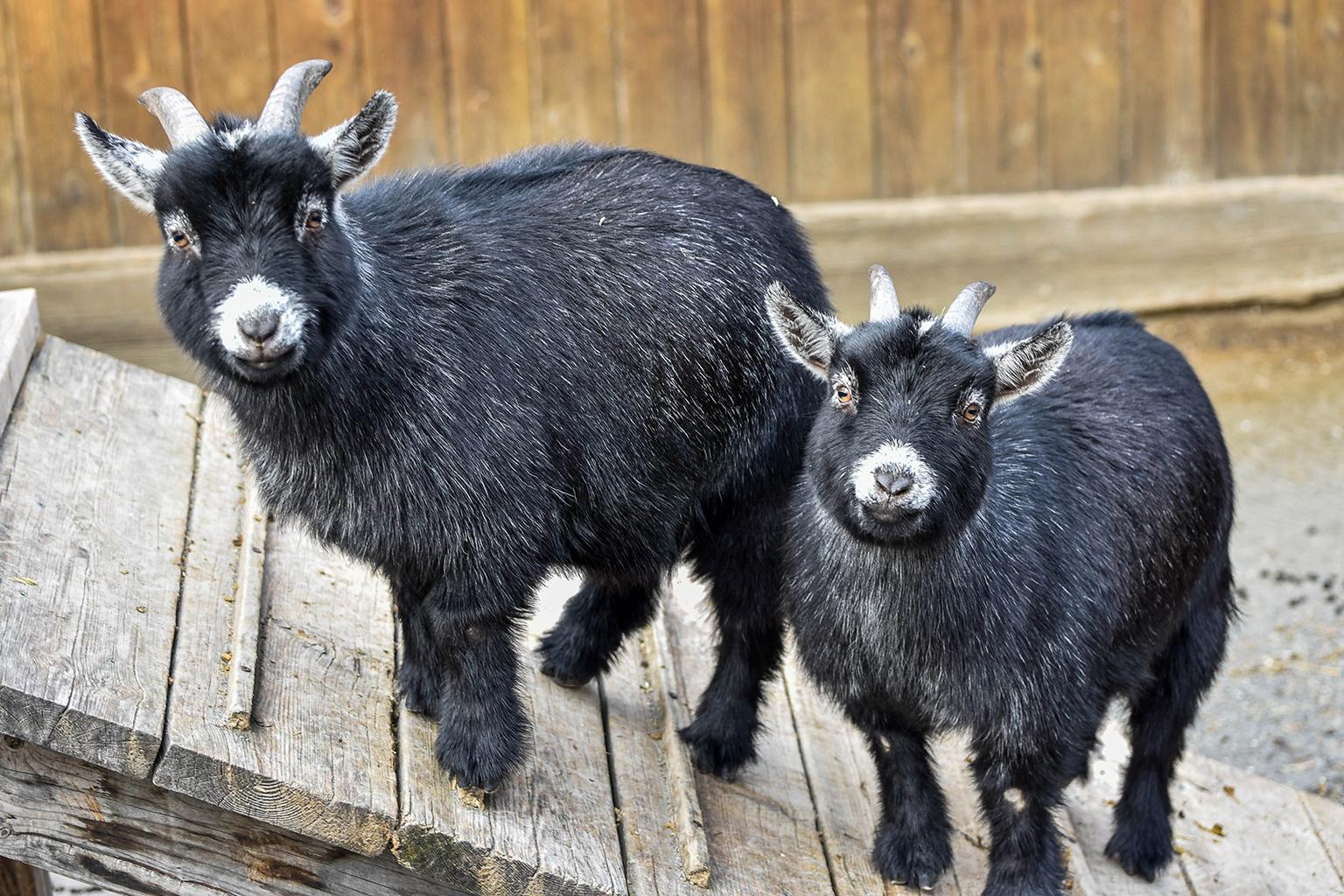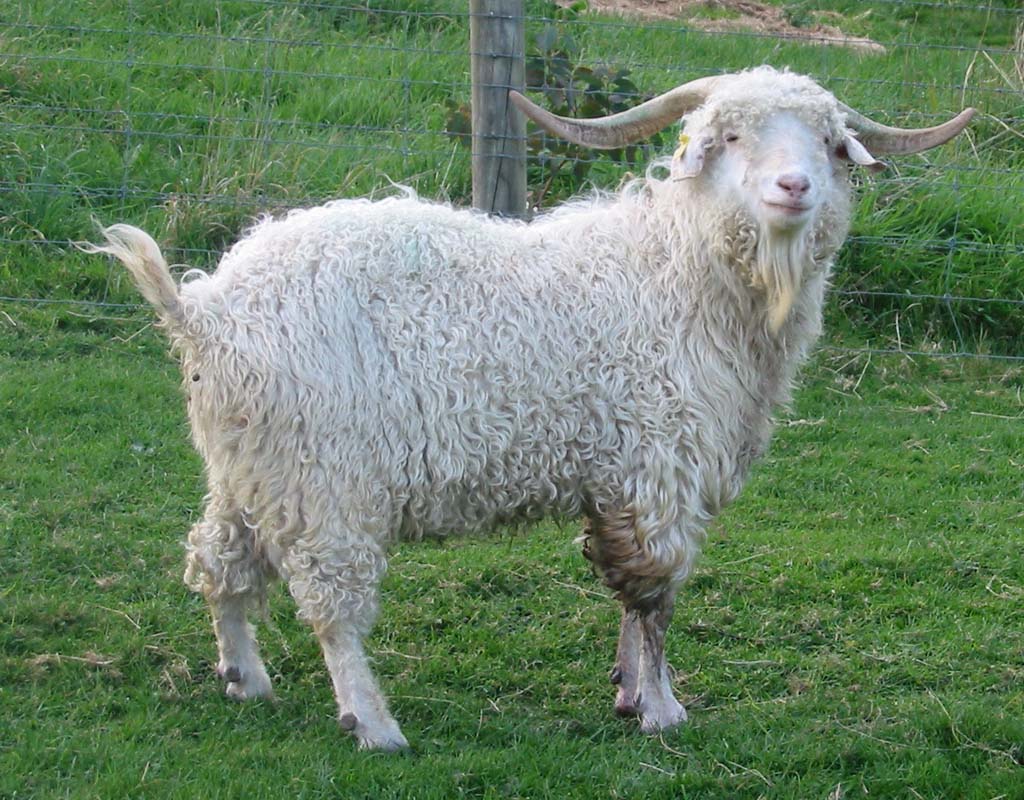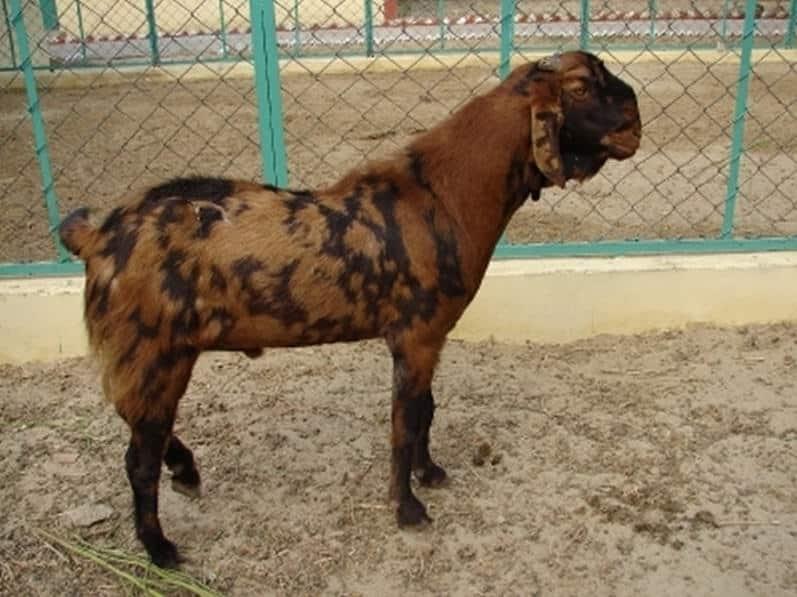Bagot Goat
Bagot goats have roamed the semi-wild regions of Blithfield, Staffordshire for several hundred years. It derived its name from its keeper Sir John Bagot. The breed was first considered “critically endangered” in 2010, by the Rare Breeds Survival Trust. By 2012, it was earmarked as “vulnerable” as there were fewer than 100 reported breeding females in the UK.
| Characteristics | Small to medium sized goat |
| Coat Hair | Long with a distinctive color pattern |
| Color | Black head and neck with the remaining portion being white; some have black patches on the rear portion and a white blaze on the face |
| Horns | Long curved horns, sweeping backward in both, males and females |
| Uses | Milk production, dairy, meat production Also for conservation purposes to tame and control growth of invasive weeds and thorny shrubs |
| Country of Origin | England |
History
The Bagot goat is believed to be Great Britain’s oldest breed of goat with a great legacy. It was thought that the breed was introduced in the 1380s at Blithfield Hall, and legend had it that the goats were given to John Bagot by Richard II of England on his return from the crusade war as a compliment to good hunting the King had enjoyed at Blithfield. Sir John Bagot, from whom the breed derived its name, was believed to be the keeper of the original herd at Blithfield.
For Milk and Meat
Used for their meat and milk in a limited amount, their smaller size does not provide high monetary returns. Additionally, they do not produce much milk compared to other dairy goat breeds.

